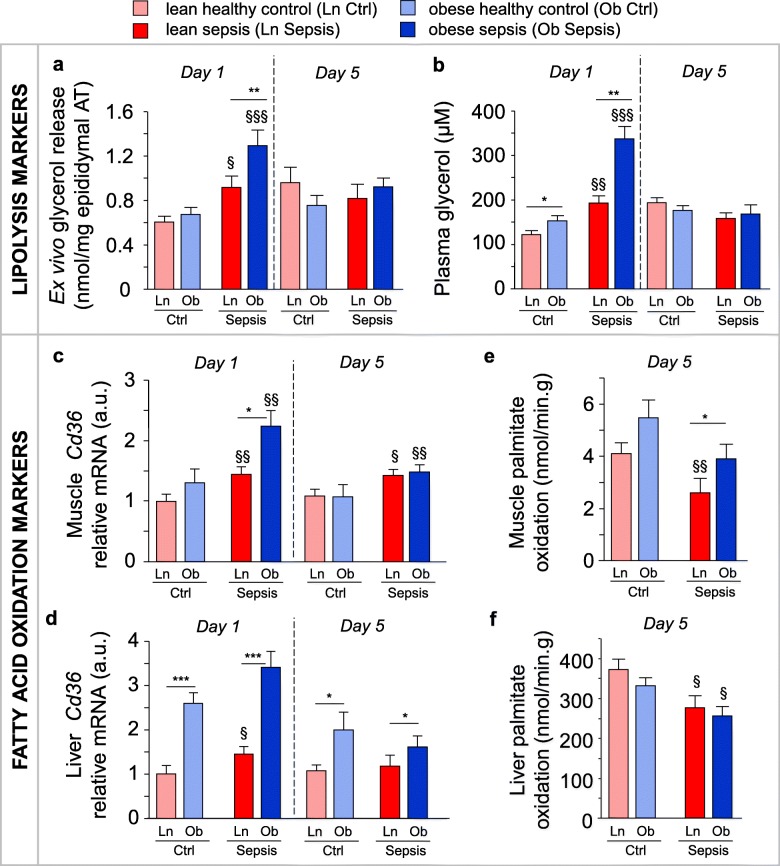Fig. 1.
Effect of overweight/obesity on lipolysis and fatty acid oxidation during sepsis. Markers of fatty acid mobilization and metabolism were compared in lean (Ln) and overweight/obese (Ob) septic mice after 1 (d1) or 5 days (d5) of illness. a Ex vivo-released glycerol per epididymal adipose tissue (AT) explant mass. b Plasma glycerol. c Relative mRNA expression of fatty acid transporter Cd36 in the muscle, and d the liver. e In vitro palmitate oxidation in the muscle and f the liver. Gene expression data are normalized to Rn18s or Hprt and shown relative to the mean of Ln healthy controls (Ctrl). a, b, c, d d1 Ctrl: Ln n = 15, Ob n = 10; d1 Sepsis: Ln n = 15, Ob n = 15; d5 Ctrl: Ln n = 17, Ob n = 15; d5 Sepsis: Ln n = 15, Ob n = 15. e, f Ctrl: Ln n = 18, Ob n = 15; Sepsis: Ln n = 14, Ob n = 15. Data are means ± SEM. p values determined through Wilcoxon or Student’s t test [Wilcoxon p values: a d1 p = 0.003, d5 p = 0.3, c d1 p = 0.008, d5 p = 0.003, d d1 p < 0.0001, d5 p = 0.05, e p = 0.003 ANOVA p values: b d1 p < 0.0001, d5 p = 0.3, f p = 0.007]. § p ≤ 0.05, §§ p ≤ 0.01, §§§ p ≤ 0.001 between Ctrl and Sepsis and * p ≤ 0.05, ** p ≤ 0.01, ***p ≤ 0.001 between sepsis groups

